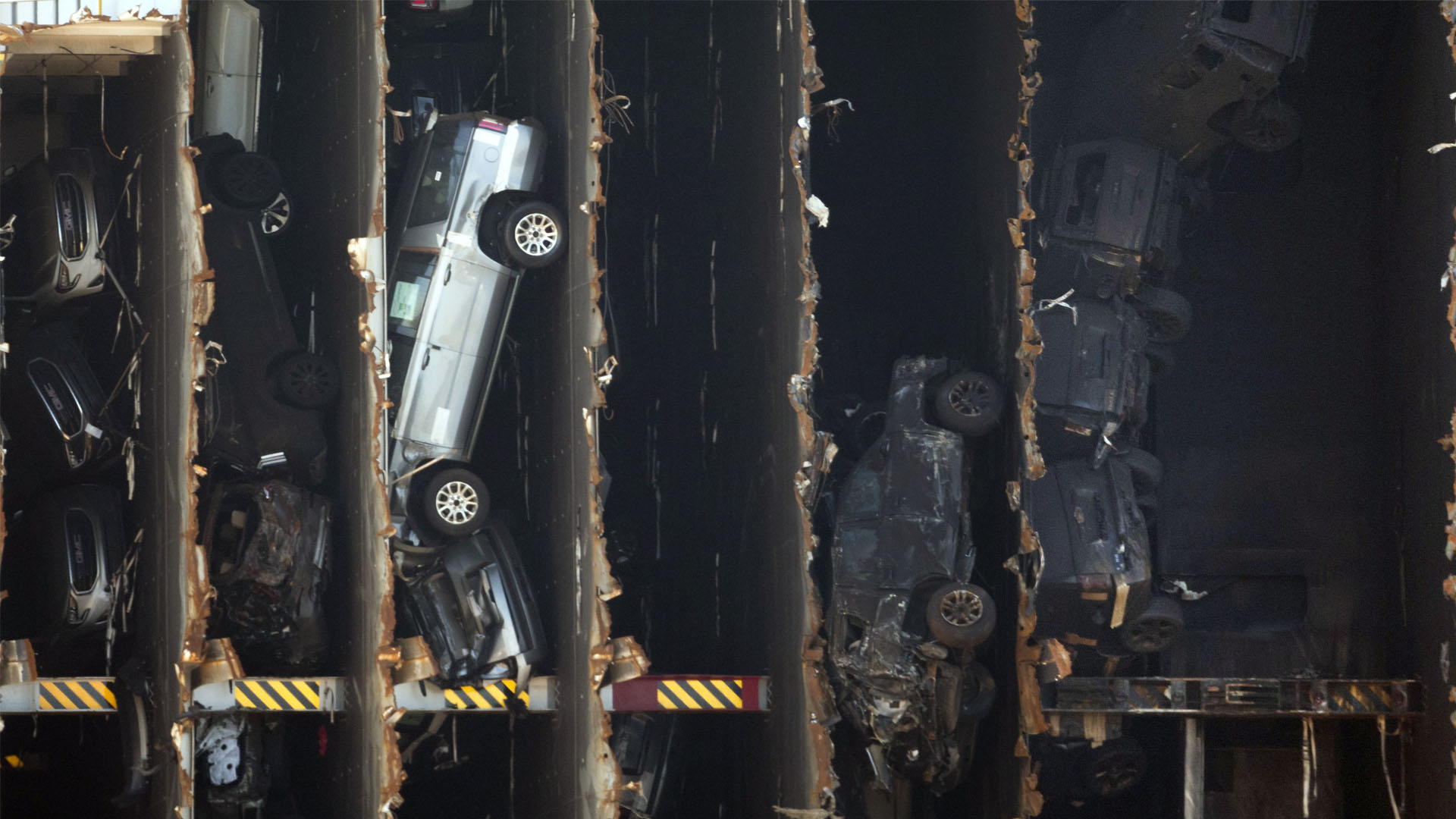

The now-infamous MV Golden Ray cargo ship is in the process of being cut up by what else—a giant chain. The diverse group of around 4,200 vehicles on board were en-route to the Middle East—some to be sold, others just being transported. These plans were derailed when the ship listed over near the port of Brunswick in Georgia and planted itself firmly on the seafloor, which resulted in the salvage operation now underway.
Now, new details concerning why the ship may have capsized have surfaced, with Car and Driver discovering
a forensic report compiled by the Coast Guard that attempts to break down the reason for the ship’s snafu. In a nutshell, there are a few reasons why it happened, but one of the most glaring is pretty rudimentary: The ship was top-heavy. Smaller Kia Fortes and Hyundai Accents were unloaded when the ship ported in Brunswick and they were replaced with Kia Tellurides which are, of course, much heavier than the compact Fortes and Accents. This may have not been such an issue if the trucks were placed on a lower deck, or if 1,500 tons of ballast water hadn’t been emptied from the ship, but they were loaded onto the 12th deck. In total, the Golden Ray has 13 decks.

A Naval architect, Lt. Ian Oviatt of the US Coast Guard, testified that the Golden Ray was likely unstable even before it capsized in the St. Simons Sound “because the vessel either had too much cargo at a high center of gravity or not enough liquid at a low center of gravity.” As previously mentioned, it was found that the ship released 1,500 tons of ballast water in its voyage from Freeport, Texas to Georgia, which, in combination with the additional weight of the Tellurides—Kia’s SUV weighs 1,200 pounds more than the compacts it replaced—likely contributed to its capsize.
“The vessel could’ve taken on additional ballast to be in compliance with the 2008 Intact Stability Code, the cargo could’ve also been shifted so it was at a lower vertical center of gravity,” Lt. Oviatt said.
Precise details of which other vehicles were loaded on the ship and where they were loaded have also surfaced. Below, the location and type of vehicles can be discerned based on a loading diagram. You can see a large number of Tellurides near the top deck, which likely contributed to the ship’s capsizing.



The team cutting up the ship is preparing to get the chain slicing again; however, it’s unclear when the next cut will take place. The first attempt to cut the ship was delayed several times, with the massive chain breaking and needing repair at least once. It may not be until next year that we see more pictures of the destroyed vehicles inside, but there are still several more cuts to be made, so stay tuned.
Got a tip? Send us a note: tips@thedrive.com